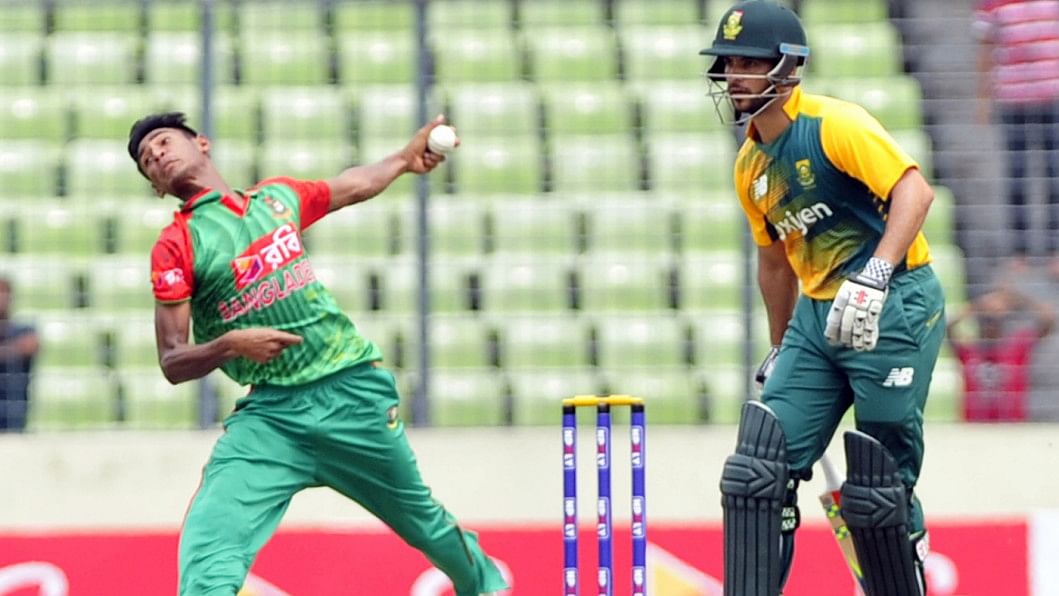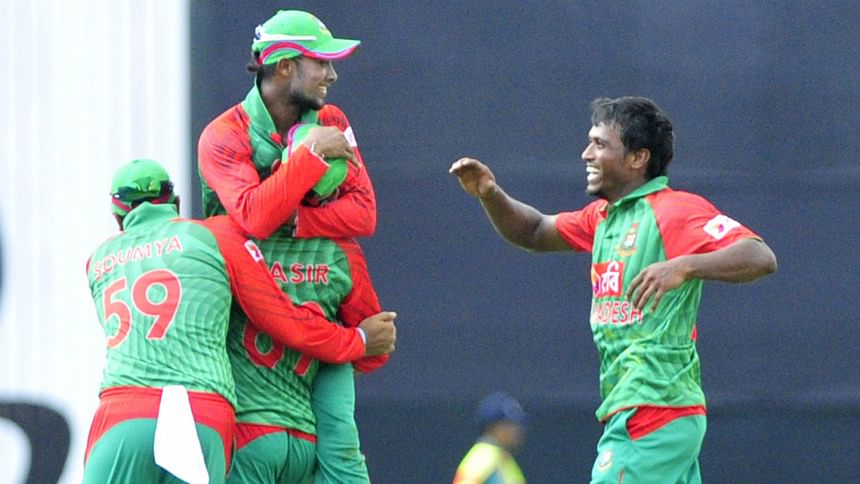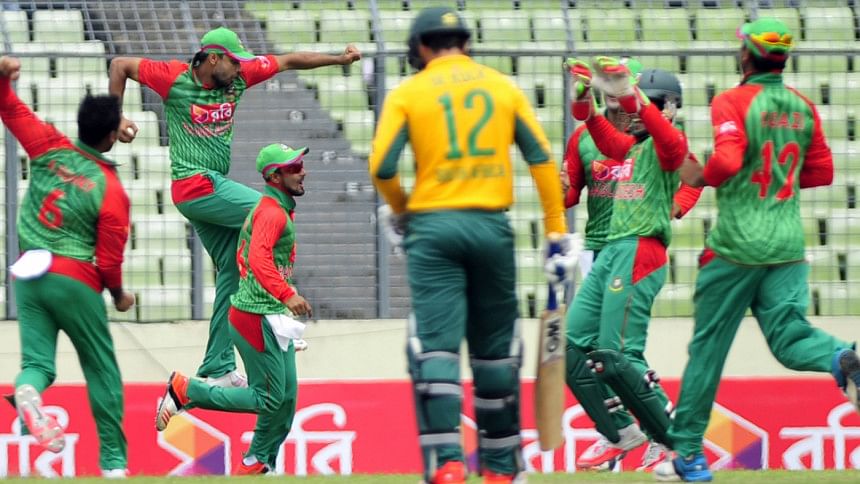Pace pays off for Bangladesh

In the last few months Bangladesh cricket has taken giant strides in limited-overs cricket. First, they showed England the door in the World Cup, then whitewashed Pakistan, followed by a series win against India, and now they've pulled one over South Africa to keep the series alive.
More importantly, with the win in the second ODI they have all but sealed their spot in the Champions Trophy, and that's a huge achievement, reports ESPNCricinfo.
In 2013, Bangladesh couldn't make the cut; now West Indies and Pakistan will fight for the eighth slot.
For the longest time Bangladesh's evolution - or lack of it - as a cricketing nation was a theme for much debate.
It's not as if they haven't done anything of note on their international journey thus far, but not only have their highs been too few compared to the lows, they have rarely managed to stitch together a formidable run of results until now.
In the past Bangladesh would beat teams like India, Pakistan or Australia in a game and then meekly surrender to the same or other opposition in the next few games.
A win here and an upset there wasn't doing justice to a team that has been playing international cricket for 29 years. But now they seem to have come of age, at least in the shorter formats.
Their surge in international cricket has come about by design. Previously Bangladesh would compete at home thanks to their many spinners but fail overseas.
A few years ago I played a couple of games in the Dhaka Premier League - a 50-overs tournament played under full ICC rules and regulations.
In one game I played for a team led by Mushfiqur Rahim against one led by Mohammad Ashraful. The pitch was bereft of grass and moisture, and unsurprisingly both teams played many spinners to utilise the conditions.
While it was understandable to play horses for courses, I was shocked to see Ashraful's team bowl their 50 overs only with spinners; there wasn't a single bowler who bowled seam up.
This bowling attack will keep them in the hunt overseas, but for Bangladesh to consistently compete and win, their batting needs to take it up a notch
I was told that it wasn't an aberration, and that most teams in Bangladesh did the same. That might have done the job in local cricket, but was it ever going to prepare them for the tougher challenges at international level?
Since then, a lot seems to have changed. Teams in the Dhaka Premier League might still be happy playing spinners but the value of fast bowlers isn't lost on the national side, which has been able to unearth some decent quality performers in recent times.
Rubel Hossain has grown in stature, Taskin Ahmed is an exciting prospect, and Mustafizur Rahman is more than a handful with his variations.
It has reflected in the results. This year, Bangladesh's fast bowlers have taken 72 wickets in ODIs, and their spinners 69 - a small difference, but a definite shift compared to 2014, when spinners took 172 wickets and fast bowlers 101.
Mashrafe Mortaza has done a good job of managing his resources as captain (he has been impressive with the bowling changes) and bowling his quota of overs as a first-change bowler.

Add it up and Bangladesh have a good bowling unit for all conditions. The shift from spin to pace in their thought process has set them up for growth at the highest level.
Their experienced batsmen, starting with Tamim Iqbal, Mushfiqur and Shakib Al Hasan, have each played about 150 ODIs or more; Mahmudullah has 121. While all of them have shown signs of brilliance from time to time, the fact is that they average in the low- to mid-30s.
With the exception of Shakib, who is an allrounder, the rest are averaging too low. Those four players have 17 ODI centuries (Shakib has scored six) between them in 579 matches. To put things in perspective, Virat Kohli has 22 centuries in 161 games.
Bangladesh cricket is blessed with some exciting batting talent coming through the ranks. The likes of Soumya Sarkar, Litton Das, Sabbir Rahman and Nasir Hossain look like batsmen who belong in the international arena, but it will be unfair to expect them to start winning games on their own immediately.
Bangladesh cricket needs its senior players to take control of games and allow the younger ones to settle down. It's more likely Sarkar might play a loose shot if he sees Tamim throw away his wicket at the other end. Similarly, Sabbir will dig in a little deeper if Mushfiqur is doing the same.
One prime reason, as I see it, of Bangladesh taking longer than expected to realise their potential is that they have never had a world-class performer in the ranks who could raise the bar for everyone else in the team and inspire others to emulate him.
The value of a top performer goes beyond the number of runs or wickets, for he sets a higher bar for everyone in the team, and that helps the team start punching above its weight - or at least realising its potential.

I experienced this with the Rajasthan Ranji team in my first season there. Before the inclusion of three professionals - Hrishikesh Kanitkar, RR Parida and myself - the average season tally for a successful and settled Rajasthan Ranji player was 400-450.
While the top scorers from other teams made over 1000 runs a season, Rajasthan cricket was happy with its mediocrity. That mindset changed in my first season there, because the professionals scored over 700 runs apiece, and that made everyone around believe that 400 was no longer acceptable.
Next season, a couple of local players, the same guys who were in the 400-450 range for years, scored over 1000 runs and surpassed all three professionals.
Bangladesh cricket is on the cusp of becoming a strong Asian team in limited-overs cricket. To make this a reality they will need their senior pros to raise their individual games.
Good-looking 30s, cheap dismissals and irresponsible shots must become things of the past.

 For all latest news, follow The Daily Star's Google News channel.
For all latest news, follow The Daily Star's Google News channel. 




Comments